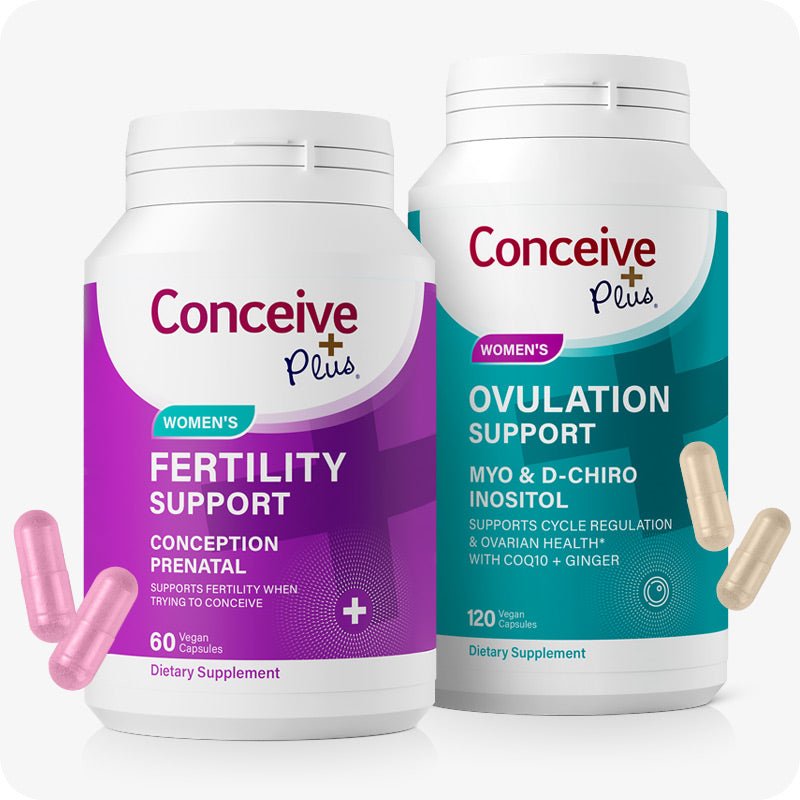Light Period Blood: Understanding the Variations in Menstrual Flow

Menstrual cycles are as unique as the individuals who experience them, with differences in duration, flow, and the appearance of period blood. These variations are influenced by factors such as age, hormonal fluctuations, lifestyle, and underlying health conditions. Observing and understanding the characteristics of period blood can provide valuable insights into a person’s reproductive health and overall well-being.
Among these variations, light period blood often draws attention due to its noticeable departure from what may be typical for an individual. This change can manifest in different ways, including a reduced flow, changes in duration, or alterations in color. For instance, bright red spotting might occur at the start or end of a cycle, while a light rust color could indicate a blend of blood with cervical mucus, often linked to a lighter flow. These changes might also coincide with a period that is shorter and lighter than usual, which can sometimes cause concern or confusion.
Understanding the causes and implications of these changes is critical. While lighter period blood is often harmless and linked to natural factors like hormonal fluctuations or temporary lifestyle changes, it can occasionally signal an underlying issue, such as a hormonal imbalance, nutritional deficiency, or even early pregnancy [1]. Recognizing these distinctions empowers individuals to take proactive steps toward monitoring their health and seeking medical advice when necessary, ensuring their menstrual patterns remain a reliable indicator of their overall health.
What is Normal Period Blood?
To understand variations such as light period blood, it is important to begin with a clear picture of what constitutes a normal menstrual cycle and the characteristics of healthy period blood. Normal menstrual cycles generally occur every 21–35 days, lasting between 3–7 days. The total blood loss typically ranges from 30–80 milliliters over the course of the period. This flow is not purely blood but also includes uterine lining tissue and mucus, contributing to the texture and appearance of the discharge [2].
The color of healthy period blood can vary naturally throughout the cycle. At the beginning of menstruation, the blood is often bright or deep red, indicating fresh blood. Toward the middle of the period, the color may become darker or take on a more clotted consistency due to slower flow and the natural breakdown of blood. As the period comes to an end, the blood may appear brown or even black, as it has had more time to oxidize.
Several factors influence these changes in appearance, flow, and duration. Hormonal fluctuations are one of the most significant contributors. For instance, during ovulation, increased estrogen levels help thicken the uterine lining, which can affect the volume and texture of the period blood that is later shed. Conversely, lower hormone levels or imbalances can result in lighter or irregular periods.
Age also plays a key role in shaping menstrual patterns. During puberty, cycles can be unpredictable, and period blood may be lighter or more variable in color as the body establishes a regular rhythm. Similarly, during perimenopause, hormone levels fluctuate significantly, often leading to lighter, shorter, or irregular periods.
Overall health factors such as stress, diet, and physical activity levels also affect menstrual flow. High levels of physical stress or extreme changes in diet can reduce the production of hormones necessary for a full menstrual cycle, leading to light period blood. Understanding what is normal helps establish a baseline, making it easier to identify when changes require further attention or medical evaluation.
For example:
- Bright Red Blood: Indicates fresh blood flow, often seen at the beginning of a period.
- Dark Brown or Black Blood: Common toward the end of the period as older blood is expelled.
- Healthy Period Blood Consistency: Typically includes a mix of blood, mucus, and tissue.
Understanding these variations helps differentiate between normal and potentially concerning changes in menstrual patterns.
Causes of Lighter Period Blood
A light period can manifest in several ways, such as reduced volume, shorter duration, or a lighter color. These changes might be temporary or indicative of an underlying condition. Sometimes, light pink blood before period can signal early hormonal shifts or implantation spotting, insights that are further explored in our article What Can Cause Light Pink Blood Before Period? Common causes include:
-
Hormonal Fluctuations:
- Estrogen plays a critical role in building the uterine lining. Lower estrogen levels can lead to lighter or shorter periods.
- Hormonal changes during perimenopause or as a result of hormonal contraception often result in lite period.
-
Stress:
- Chronic stress disrupts the hypothalamus-pituitary-ovarian axis, which regulates the menstrual cycle. This can result in lighter periods or spotting instead of a full flow.
-
Pregnancy:
- Early pregnancy spotting may appear as bright red spotting or a light rust color blood. This is often due to implantation bleeding and is typically lighter than a regular period [3].
-
Diet and Nutrition:
- Poor nutrition, extreme dieting, or eating disorders can lead to a thinner uterine lining, causing light period blood or missed periods altogether.
-
Medical Conditions:
- Polycystic Ovary Syndrome (PCOS): Hormonal imbalances can result in irregular, lighter, or skipped periods [4].
- Thyroid Disorders: Hypothyroidism or hyperthyroidism affects hormone regulation, potentially leading to a period is shorter and lighter than usual.
- Endometrial Issues: Conditions such as endometrial atrophy, where the uterine lining thins excessively, can also cause lighter periods.
-
Age and Life Stage:
- During puberty or perimenopause, lighter or irregular periods are common as the body adjusts to hormonal changes.
Recognizing Healthy Variations in Period Blood
Light period blood doesn't always indicate a problem. In some cases, it reflects a natural variation or external factors, such as changes in activity levels or diet. Identifying whether the change aligns with normal health can help alleviate concerns:
- Bright Red Spotting vs. Flow: Spotting may occur outside the menstrual period and is typically lighter than a regular period. This is common with hormonal birth control or after ovulation.
- Color Changes: A light rust color blood may appear in lighter flows and is often due to a mix of cervical mucus and blood. This is not unusual but should be monitored if persistent.
- Shorter Durations: A period that is shorter and lighter than usual might simply indicate a one-off hormonal fluctuation or lifestyle change.
When to Be Concerned About Light Period Blood
While many instances of lighter period blood are harmless, certain signs may indicate an underlying issue that requires medical attention:
- Persistent Changes: If a light period continues for several cycles without an identifiable cause, it may signal a hormonal imbalance or other health concerns.
- Irregular Spotting: Frequent bright red spotting between periods, especially when unrelated to ovulation, may require evaluation for conditions such as uterine fibroids or infections.
- Other Symptoms: Accompanying symptoms like severe pain, fatigue, or an unexpected change in menstrual cycle frequency can indicate more serious conditions.
Differentiating Between Light Period Blood and Spotting
Understanding the distinction between a light period and spotting can clarify whether further investigation is needed:
- Spotting: Refers to light bleeding outside of the regular menstrual period. It is often scant and doesn't require a pad or tampon.
- Light Period: Refers to lighter-than-normal flow during the expected menstrual period, potentially accompanied by a shorter duration.
Addressing Concerns About Light Periods
If you notice consistent changes in your period, consider the following steps:
- Track Your Cycle: Use a menstrual tracking app to monitor flow, duration, and symptoms over several months.
- Evaluate Lifestyle Factors: Reflect on recent changes in stress levels, diet, or exercise routines that might impact your cycle.
- Seek Medical Advice: Consult a healthcare provider if changes persist or are accompanied by other concerning symptoms.
Managing Lighter Periods
Management strategies depend on the cause of the lighter period:
-
Lifestyle Adjustments:
- Ensure a balanced diet rich in iron and vitamins to support uterine health.
- Manage stress through relaxation techniques such as yoga or meditation.
-
Medical Interventions:
- Hormonal treatments may help regulate cycles and restore normal flow.
- Addressing underlying conditions, such as thyroid imbalances, can improve menstrual health.
-
Supplements:
- Iron supplements may be beneficial if lighter periods are linked to low iron levels [5].
- Consult a healthcare provider before starting any supplements.
To support reproductive health on your conception journey, consider Conceive Plus Women’s Fertility Support, formulated with essential nutrients to help balance hormones and foster a more optimal environment for pregnancy.
The Bottom Line
While light period blood may raise concerns, it is often a harmless and temporary variation. By staying informed about a normal blood period and understanding the factors that can influence menstrual patterns, individuals can make confident and informed decisions about their reproductive health. Listening to your body's signals and seeking medical advice when needed ensures that your menstrual health remains an important aspect of your overall well-being.
Understanding menstrual health allows individuals to recognize the natural variations from cycle to cycle and differentiate them from changes that may indicate a health concern. Menstrual blood provides a wealth of information about the body’s internal balance, and changes, such as lighter period blood, often reflect shifts in factors like hormones, stress levels, or overall health. By paying attention to these subtle cues, individuals can better understand their reproductive health and identify when professional guidance is necessary.
Lighter period blood, while sometimes worrisome, is often a normal variation in the menstrual cycle. It can occur due to common and temporary factors such as mild hormonal fluctuations, lifestyle adjustments, or the body responding to new medications. However, in some cases, it may be a symptom of more complex medical conditions, such as thyroid imbalances, polycystic ovary syndrome (PCOS), or nutritional deficiencies that require intervention.
Tracking changes in the menstrual cycle—such as flow, color, and duration—is essential to navigate these variations effectively. Tools like period tracking apps or a simple journal can help identify patterns over time, making it easier to determine what is normal for your body. This information can also be invaluable during consultations with healthcare providers, enabling them to assess deviations and recommend appropriate actions.
References
- Liang J, Ali F, Ramaiyer M, Borahay MA. Determinants and Assessment of Menstrual Blood Flow. Curr Epidemiol Rep. 2023 Dec;10(4):210-220. doi:10.1007/s40471-023-00332-0. Epub 2023 Sep 21. PMID: 38275001; PMCID: PMC10810143.
- Kirstin Tindal, Caitlin E. Filby, Fiona L. Cousins, Stacey J. Ellery, Beverley Vollenhoven, Kirsten Palmer, Adrienne Gordon, Caroline E. Gargett, Miranda Davies-Tuck. The composition of menstrual fluid, its applications, and recent advances to understand the endometrial environment: a narrative review. F&S Reviews. [Volume 5, Issue 3]. 2024. 100075. ISSN 2666-5719. https://doi.org/10.1016/j.xfnr.2024.100075.
- Karimi, A., Sayehmiri, K., Vaismoradi, M., Dianatinasab, M., & Daliri, S. (2024). Vaginal bleeding in pregnancy and adverse clinical outcomes: a systematic review and meta-analysis. Journal of Obstetrics and Gynaecology, 44(1). https://doi.org/10.1080/01443615.2023.2288224
- Zhang, Carey Y, Li Huichu, Shunan Suharwardy, Sanaa Chaturvedi, Uvika, Fischer-Colbrie Tyler, Maratta Lindsey A. Onnela, Jukka-Pekka, Coull Brent A., Hauser Russ, Williams Michelle A., Baird Donna D., Jukic Anne Marie Z. Mahalingaiah Shruthi, Curry Christine L. Abnormal uterine bleeding patterns determined through menstrual tracking among participants in the Apple Women’s Health Study. American Journal of Obstetrics & Gynecology. Volume 228. Issue 2. 213.e1 - 213.e22. https://doi.org/10.1016/j.ajog.2022.10.029
- Munro MG, Mast AE, Powers JM, Kouides PA, O'Brien SH, Richards T, Lavin M, Levy BS. The relationship between heavy menstrual bleeding, iron deficiency, and iron deficiency anemia. Am J Obstet Gynecol. 2023 Jul;229(1):1-9. doi:10.1016/j.ajog.2023.01.017. Epub 2023 Jan 24. PMID: 36706856.













